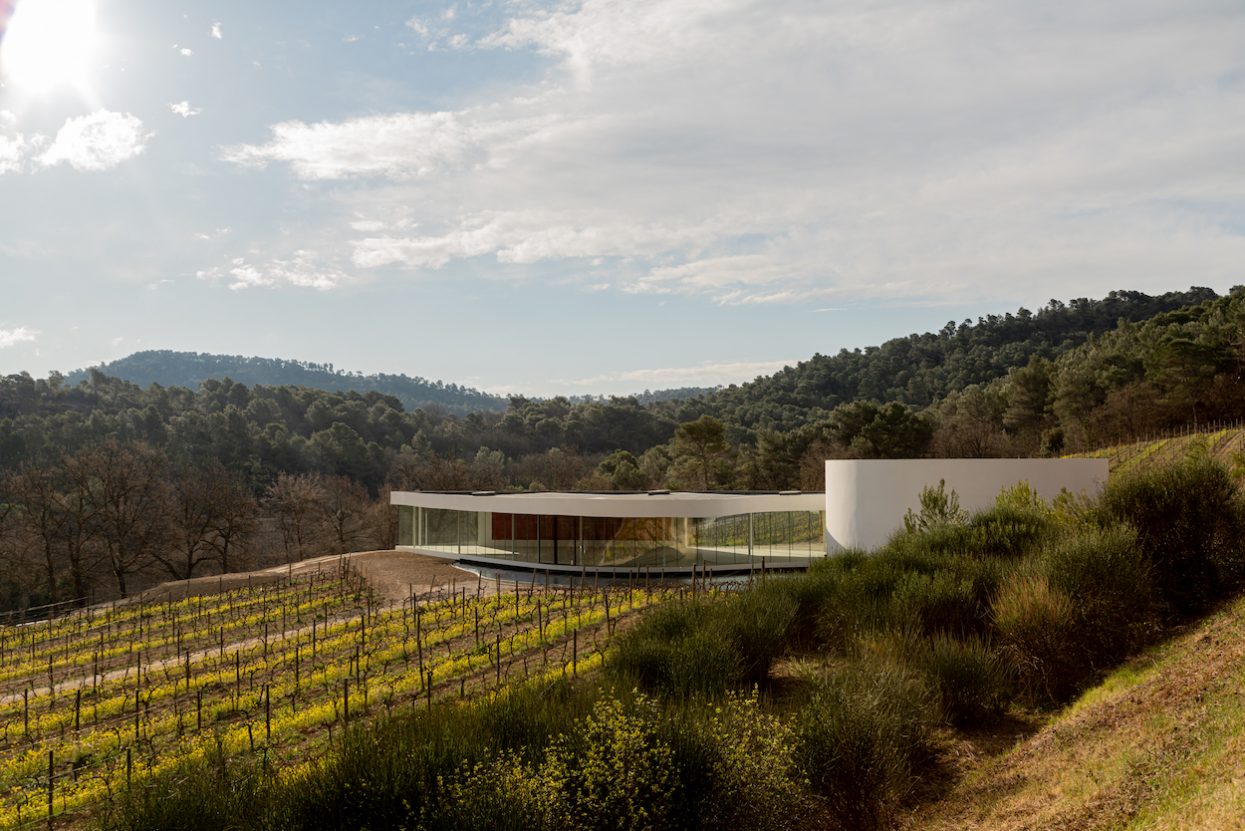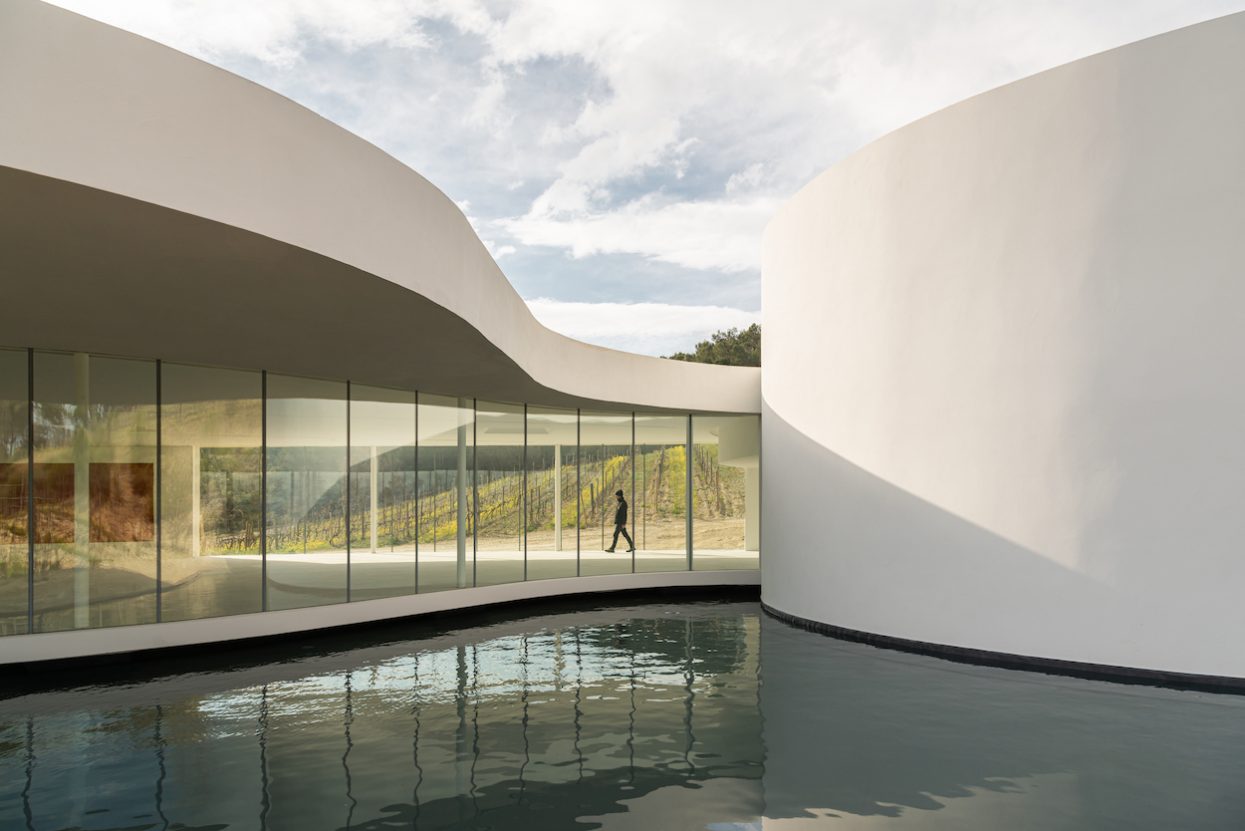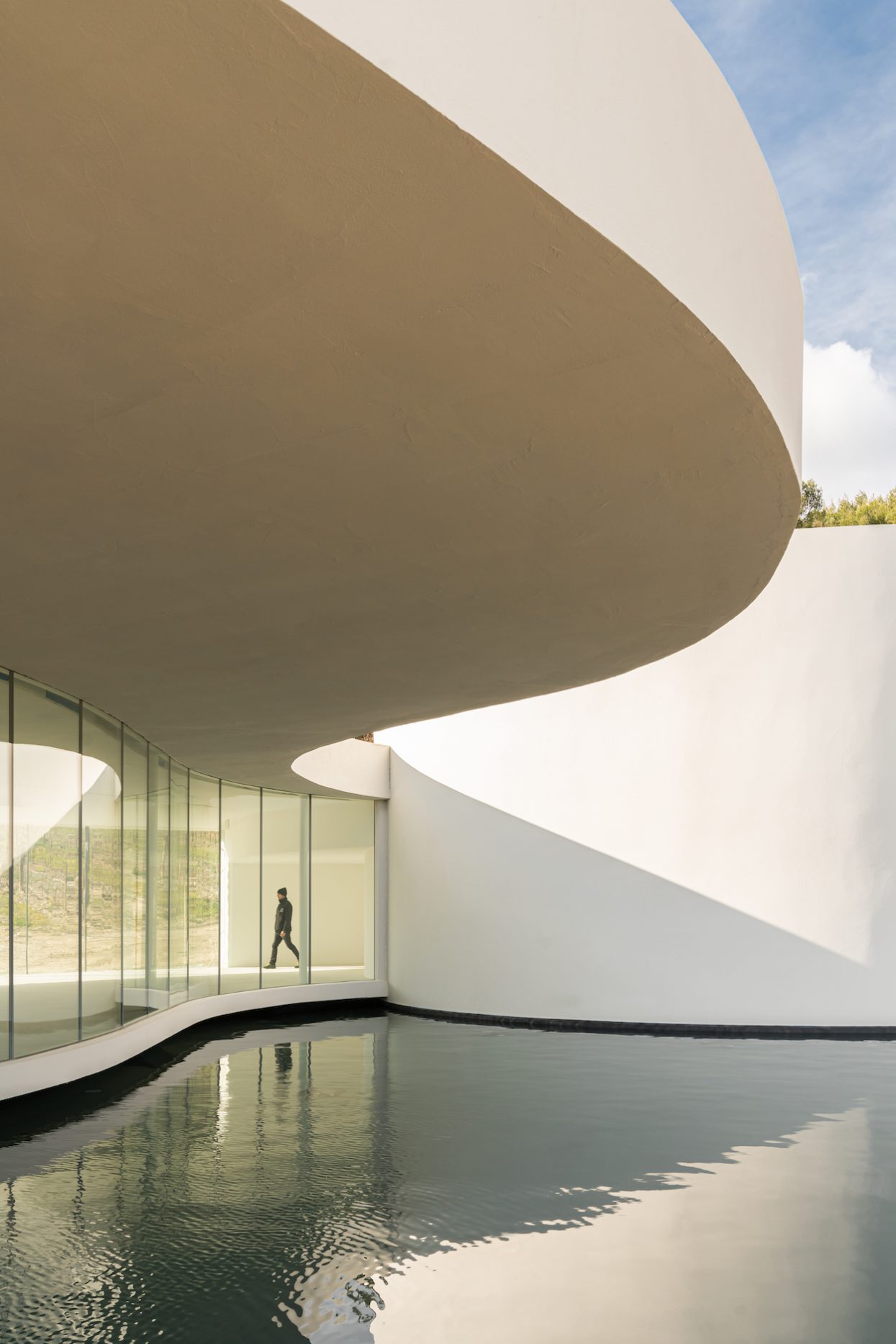Even though Oscar Niemeyer is best celebrated for his boundary-pushing modern architecture in Brasilia, the late visionary left behind a multitude of masterpieces throughout France: the Communist Party’s headquarters, Maison de la Culture du Havre, and the Labor Council Building of Bobigny to name a few. Now, a decade after his death, one of Niemeyer’s final buildings is taking shape at the scenic Château La Coste in Provence, the 500-acre vineyard of Vermentino grapes populated with wondrous sculptures and buildings by Pritzker Prize laureates Frank Gehry, Jean Nouvel, and Richard Rogers.
Niemeyer intended for the curved pavilion, which officially opens to the public in June, to become an exhibition space and auditorium that coexists with the vineyard’s rolling hills yet gently disrupts it. He designed the structure in collaboration with his grandson-in-law, Jair Valera, who manages an architecture firm devoted to upholding Niemeyer’s legacy. “He had a great influence on my architecture and my personal life,” Valera says. “He thrilled me with each new project,”
Likewise thrilling is how the building’s organic lines reflect Niemeyer’s distinctive style while sitting in perfect harmony with the Provençal hills, its striking glass facade giving the impression of the vineyard unfolding throughout. A shallow pool at the entrance, meanwhile, captures the interaction of light and reflection. “The location is very beautiful and a pleasant, peaceful environment,” Niemeyer wrote. “The pavilion had to be a light construction adapted to the landscape as well as the vegetation. The structure is at home in this setting and a joy to walk around.”
Niemeyer enjoyed a long and faithful relationship with France, a country close to his heart. During the Brazilian military dictatorship of the 1960s, he went into exile in Paris, where he lived on Boulevard Raspail and was often seen at Le Brasserie La Coupole. Even after returning to Rio de Janeiro, Niemeyer always said that he’d only ever leave his home city again for Paris. So when the Château La Coste commission came about, in 2010, the centenarian quickly sprung into action and began envisioning how he’d not only leave his stamp on the vineyard—he considered wine an important symbol of mankind’s earthly presence—but as his final token of affection for a country he loved dearly.



